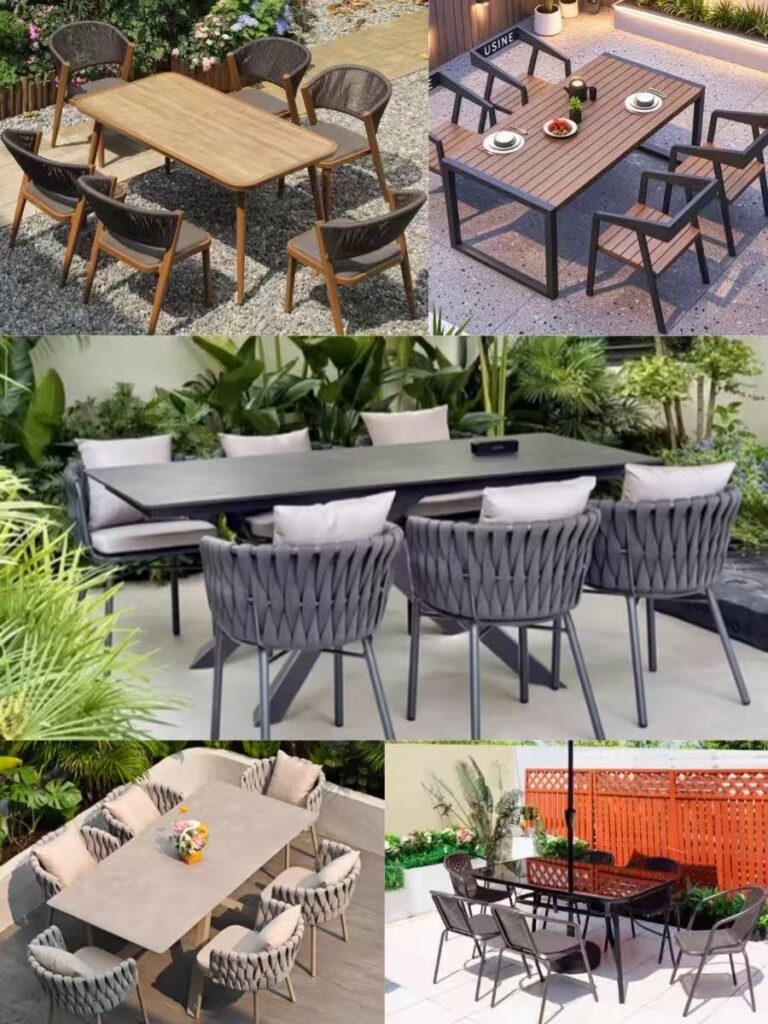Creating a comfortable and inviting outdoor space starts with choosing the right furniture. Whether you have a patio, deck, balcony, or garden, the right table and chairs can transform your area into a perfect spot for relaxation, dining, and entertaining. But with so many materials and styles available, how do you decide what’s best for your space?
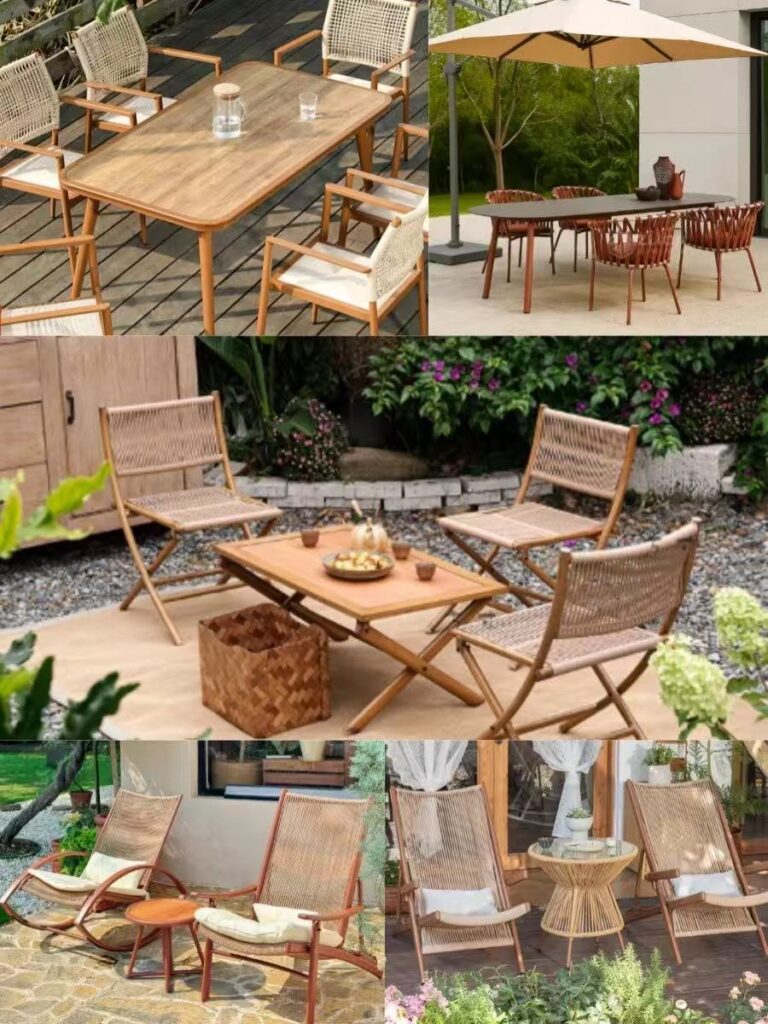
In this guide, we break down the most common types of outdoor furniture materials—highlighting the pros and cons of each—to help you make an informed decision that fits your lifestyle, climate, and budget.

1. Wrought Iron Tables and Chairs
✔️ Pros:
Wrought iron is known for its durability and strength. It can handle frequent use and harsh weather conditions, making it a long-lasting option. It’s also relatively affordable, offering great value for those looking for sturdy furniture without a high price tag.
❌ Cons:
Iron tends to feel cold to the touch, which might not be ideal for cooler seasons. The biggest drawback is its susceptibility to rust, especially in humid or rainy climates. Without regular maintenance and protective coatings, wrought iron furniture can corrode over time.
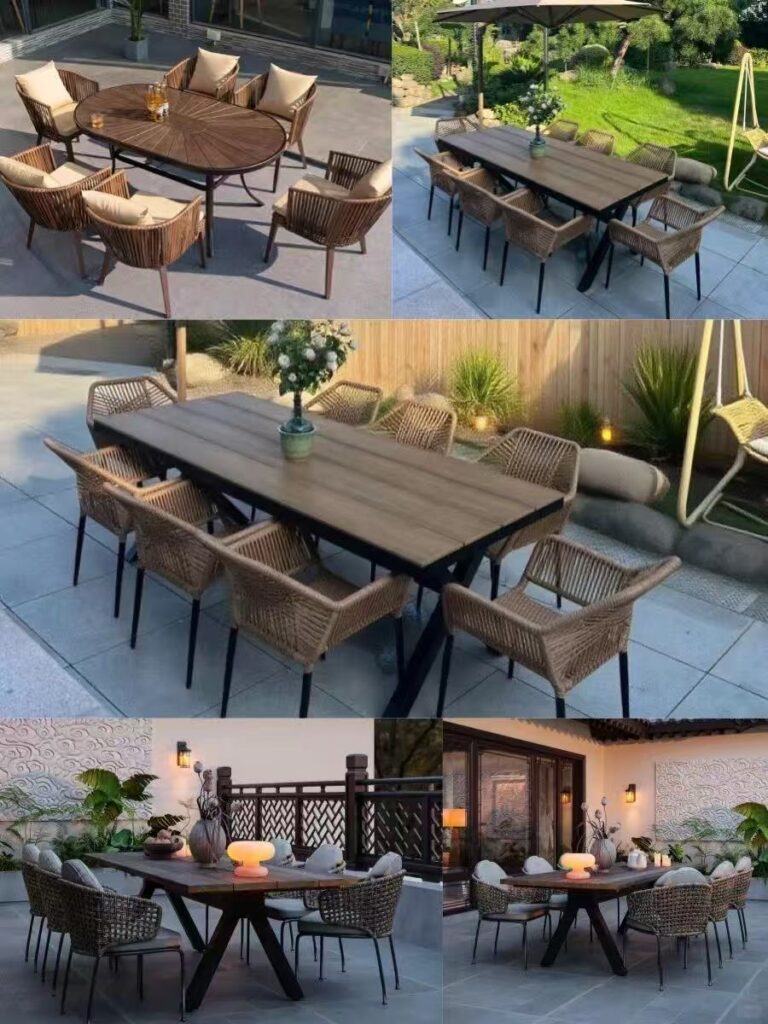
2. Composite Wood (WPC) Tables and Chairs
✔️ Pros:
Made from a mix of recycled plastic and wood fibers, composite wood is an eco-friendly choice. It’s also budget-friendly and requires very little maintenance—just occasional cleaning with a damp cloth. It resists rot, insects, and moisture, making it suitable for nearly all weather conditions.
❌ Cons:
While durable in many ways, WPC can be somewhat brittle and may crack under heavy impact. It’s also prone to fading when exposed to direct sunlight over long periods, which might affect its appearance over time.
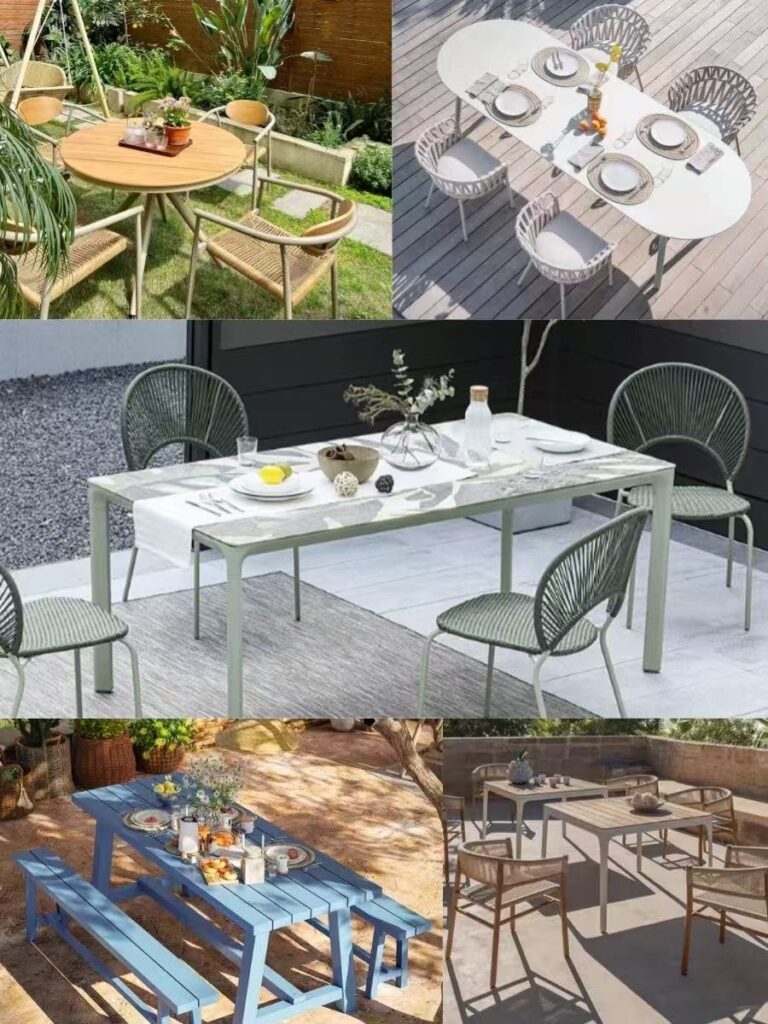
3. Rattan-Style (PE Wicker) Tables and Chairs
✔️ Pros:
Modern synthetic rattan—usually made from polyethylene (PE)—is designed to look like natural wicker but is much more durable and weather-resistant. It adds a natural, elegant, and relaxed feel to outdoor spaces, perfect for creating a cozy, resort-like atmosphere. It’s also free from harmful chemicals and easy to clean.
❌ Cons:
While high-quality PE rattan is durable, lower-quality versions may crack or unravel over time. In very humid conditions, moisture can get trapped, leading to mold or mildew if not dried properly. It may not offer the same rustic authenticity as real wood or rattan.
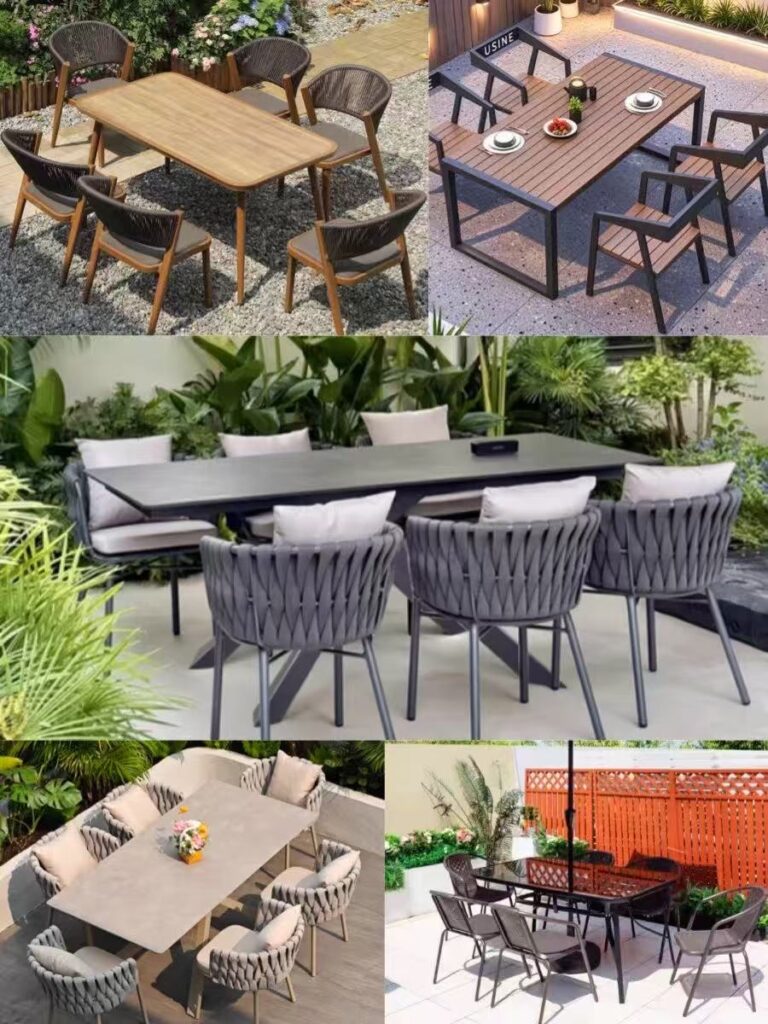
4. Aluminum Alloy Tables and Chairs
✔️ Pros:
Aluminum is both lightweight and strong, making it easy to move around yet stable enough for regular use. It’s highly resistant to rust and corrosion, making it ideal for coastal areas or regions with high humidity. Powder-coated aluminum is easy to clean and available in a variety of modern styles and colors.
❌ Cons:
Aluminum furniture is often more expensive upfront than other options. While versatile in design, it tends to lean toward contemporary and minimalist styles—so if you’re going for a traditional or rustic look, you may have fewer options.
